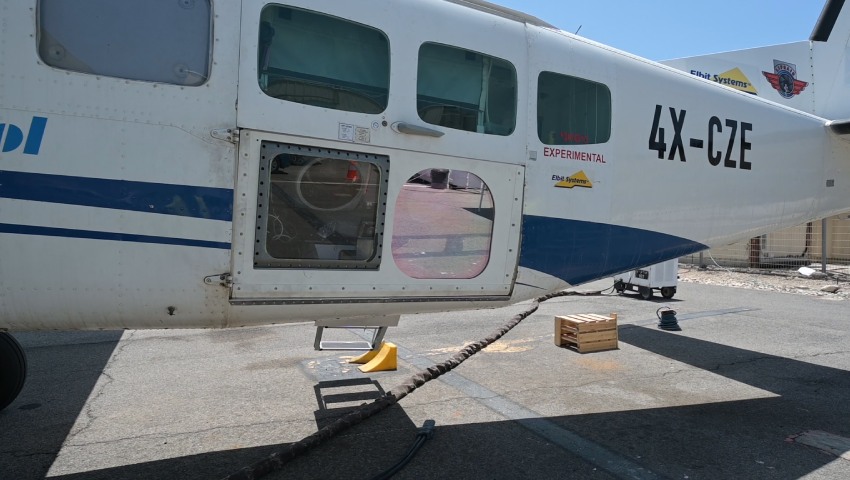The Directorate of Defense R&D in the Israel Ministry of Defense (MoD), Elbit Systems and the IAF, have effectively intercepted several UAVs using an airborne High-Power Laser Weapon System (HPL-WS).
To continue reading the rest of this article, please log in.
Create free account to get unlimited news articles and more!
A high-power laser system was installed on an aircraft and was tested in a number of scenarios. It effectively intercepted and destroyed all of the UAVs that were launched throughout the test.
The ability to intercept and destroy airborne threats in the air offers a strategic change in the air defence capabilities of Israel.
The test series was conducted under the leadership of the Directorate of Defense R&D in the Israel Ministry of Defense and, according to Defense Minister Benny Gantz, the development is significant in terms of ‘cost-effectiveness and defence capabilities’.
“The laser system will add a new layer of protection at greater ranges and in facing a variety of threats – securing the State of Israel while saving the costs of interception,” Minister Gantz said.
“I am confident that Israel’s defence industry will succeed in this important development program, and I will personally work together with the entire defense establishment to ensure its success.
"I would like to congratulate the Directorate for Defense R&D, Elbit Systems and the IAF on the technological breakthrough they have achieved.”
Israel is among the first countries in the world to achieve and demonstrate such capabilities employing an airborne, high-power laser system.
According to Brigadier General Yaniv Rotem, head of research and development at the DDR&D, the test’s success is critical for further development of the airborne High-Power Laser System after this round saw the new HPL-WS intercepted several UAVs in the air, within a range of more than one kilometre.
This test series is the first phase in a multi-year program led by the Directorate of Defense R&D and Elbit Systems to develop a laser system against a variety of long-range threats.
The method of airborne interception presents a number of advantages, including a low cost per interception, the ability to effectively intercept long-range threats at high altitudes regardless of weather conditions, and the ability to defend vast areas.
According to Oren Sabag, general manager of Elbit Systems ISTAR, the trials were successful thanks to a range of unique technological assets.
“We are proud to spearhead the development of this strategic capability together with the Ministry of Defense and the IAF,” Sabag said.
"We believe that the use of a high-power laser to carry out low-cost airborne interception of rockets and hostile unmanned aircraft, closer to their launching areas and away from population centres, offers a significant change in Israel’s defence capabilities.”
The airborne, HPL-WS is designed to complement Israel’s multi-tier missile defense array, which include the Iron Dome, David’s Sling and Arrow missile interceptor systems. This system will increase the effectiveness of air defence against existing and future threats in the region.

 Login
Login







